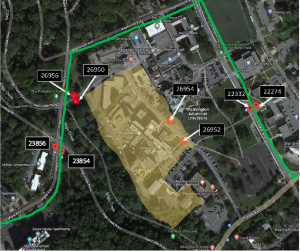Please take a few minutes to review the information below about home security and how to take steps to reinforce the security of your residence.
Quick Fact #1: The greatest crime of opportunity is burglary.
Quick Fact #2: More than 50% of burglaries committed do not involve forced entry.
Quick Fact #3: When a burglar forces entry, it is typically through a rear or side door or window, where he/she is less likely to be visible.
CRIME PREVENTION = The ability to recognize the risk of crime AND initiate action to reduce that risk. By doing so, you are taking steps to eliminate a criminal’s opportunity to commit a crime.
HOME SECURITY = The ways and habits of an individual to safeguard his/her home from burglars.
To be successful at crime prevention and home security, individuals should be proactive and seek out information, tips, and techniques on how to strengthen the security of their homes before it is too late.
The most cost-effective and successful way to safeguard your home is to follow good security habits. This includes:
1. Locking and securing your windows and doors, especially when no one is home;
2. Drawing your blinds so burglars cannot “window shop;”
3. Securing gates and fences, which is one more obstacle a burglar would have to consider when choosing a home to burglarize;
4. Trimming shrubs and bushes so your home is more visible to the street because burglars do not want to be seen; and
5. Utilizing and arming an alarm system if you have one installed – Audible alarms generally deter burglars from entering the residence.
Other ways to be proactive in home security:
1. Participate in services offered by the police department (see below);
2. Notify the proper authorities of problem items in your neighborhood such as non-functioning street lamps, trees/shrubs that need trimming, homes that look in disarray, graffiti, etc.; and
3. Get to know your neighbors – They are more likely to call in suspicious activity to your home if they know you and your daily routine/schedule.
FREE services offered by the Takoma Park Police Department:
1. Residential Security Surveys: An assessment of the strengths and weaknesses of security measures of a residence (fences, doors, lighting, etc.). An officer will go to your house, assess the security of the home, and provide cost-effective solutions for observed weaknesses. https://takomaparkmd.gov/government/police/services-and-programs/residential-home-security-survey/
2. House Checks: Service provided for those who will have their home unoccupied for an extended period of time (vacation, renovations, etc.). Your residence will be visited two times a day by a patrol officer, who makes sure your home is still secure. You will be notified immediately of any discrepancies. https://takomaparkmd.gov/government/police/services-and-programs/vacant-house-check-program/
Crime will never be completely eliminated and anyone can fall victim to crime, but the chance and risk of falling victim to a crime such as burglary can be greatly reduced by being aware of what is going on in your neighborhood, understanding the importance of home security, and making it a habit to follow daily security routines to safeguard you and your home.

